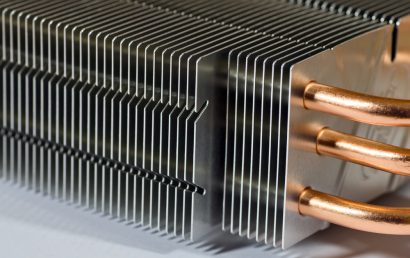Understanding Nonconductive Coating On Metal Substrate
Nonconductive coating for metal plays a big role in protecting electrical components and systems. These coatings stop unwanted current flow, prevent short circuits, and protect sensitive equipment. They are used across aerospace, defense, electronics, and many industrial environments. A nonconductive barrier is often needed when metal parts operate near circuits, sensors, or signal lines. These coatings also resist heat, corrosion, and wear, giving both insulation and durability in one layer.
What Nonconductive Coating Does
A metal part by itself will always conduct electricity. That can be dangerous in the wrong setup. Nonconductive coatings block that flow. This helps keep high-performance equipment stable and safe. The coating adds a barrier between the part and any nearby circuit or charge.
In electronics, it prevents arcing. Aerospace applications use it to stop radio frequency interference. When used in manufacturing, it helps maintain system function where sensors or machines run near exposed metal. Each coating is chosen based on its dielectric strength, temperature range, and wear resistance.
Types of Nonconductive Coatings for Metals
There’s no one-size-fits-all solution. Some coatings perform better under heat, while others are designed for wear resistance. Ceramic coatings are strong insulators that hold up well against both heat and corrosion. Polymeric coatings are useful when flexibility and moisture resistance are needed. Plasma-sprayed ceramics are often chosen for high-performance or mission-critical parts. Many of these coatings are applied using thermal spray methods, which involve surface preparation, controlled application, and consistent coverage for reliable results.
Common Applications in Industry
Nonconductive coatings are used in defense, medical, semiconductor, and power generation. In the Navy, they are applied to submarine parts that must be insulated. In aerospace, they protect turbine blades and sensors. For medical and lab tools, they help avoid interference that could affect readings or device performance.
NAVSEA S9320-AM-PRO-030/MLDG is one standard that sets specific guidelines for nonconductive coatings in Navy systems. Meeting means a high-quality application and proven results.
Performance Benefits of Using the Right Coating
These coatings do more than block electricity. They also help extend part life, reduce heat transfer, cut down on wear and friction, and fight corrosion. In systems where uptime and precision matter, these benefits translate into real performance gains. Without the right coating, components are more likely to overheat, short out, or corrode faster, leading to costly downtime and repairs.
Applied Expertise at A&A Coatings
At A&A Coatings, we apply nonconductive coatings using thermal spray systems. This gives our customers coatings that are reliable, even in the most demanding conditions. Our team has decades of experience working with military, aerospace, and advanced manufacturing standards. We’re also certified to MIL-STD-1687 and MIL-I-45208. These back up our commitment to quality and consistency.
Choose the Right Partner for Your Application
Not every part needs insulation, but when it does, it must be applied the right way. The wrong material or poor prep can cause early failure. A&A Coatings has both the technical knowledge and the in-house equipment to do it right. We’ll recommend a coating based on the function, the environment, and how the part operates in your system.
Why It Pays to Coat It Right
Nonconductive coatings make metal safer and more useful in the right setting. They help protect systems that need electrical isolation, heat resistance, and wear protection. With the right material and process, they add long-term value and performance.
Need expert help with thermal spray coatings? Contact us today to get a custom solution that fits your system.



